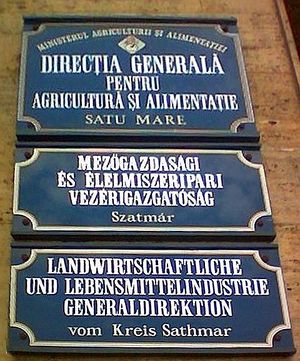اشتقاق (لغة)

الاشتقاق Agglutination هو عملية لغوية تتعلق بـ derivational morphology in which complex words are formed by stringing together morphemes without changing them in spelling or phonetics. Languages that use agglutination widely are called agglutinative languages. An example of such a language is Turkish, where for example, the word evlerinizden, or "from your houses", consists of the morphemes ev-ler-iniz-den with the meanings house-plural-your-from.
Agglutinative languages are often contrasted both with languages in which syntactic structure is expressed solely by means of word order and auxiliary words (isolating languages) and with languages in which a single affix typically expresses several syntactic categories and a single category may be expressed by several different affixes (as is the case in inflectional (fusional) languages). However, both fusional and isolating languages may use agglutination in the most-often-used constructs, and use agglutination heavily in certain contexts, such as word derivation. This is the case in الإنگليزية, which has an agglutinated plural marker -(e)s and derived words such as shame·less·ness.
Agglutinative suffixes are often inserted irrespective of syllabic boundaries, for example, by adding a consonant to the syllable coda as in English tie – ties. Agglutinative languages also have large inventories of enclitics, which can be and are separated from the word root by native speakers in daily usage.
Note that the term agglutination is sometimes used more generally to refer to the morphological process of adding suffixes or other morphemes to the base of a word. This is treated in more detail in the section on other uses of the term.
Examples of agglutinative languages
See also
References
ببليوجرافيا
- Kimmo Koskenniemi & Lingsoft Oy: Finnish Morphological Analyser, Lingsoft Language Solutions, 1995–2011.
- Bernard Comrie (editor): The World's Major Languages, Oxford University Press, New York – Oxford 1990.
- Keith Denning, Suzanne Kemmer (ed.): On language: selected writings of Joseph H. Greenberg, Stanford University Press, 1990. Selected parts are available on googlebooks.
- Victoria Fromkin, Robert Rodman, Nina Hyams: An Introduction to Language, Thompson Wadsworth, 2007.
- Joseph H. Greenberg: A quantitative approach to the morphological typology of language, 1960. Available through JSTOR and in Denning et al. (1990), p. 3–25. There is also a good a short summary.
- Gregory Grefenstette, Nasredine Semmar, Faïza Elkateb-Gara: Modifying a Natural Language Processing System for European Languages to Treat Arabic in Information Processing and Information Retrieval Applications, Computational Approaches to Semitic Languages – Workshop Proceedings, University of Michigan 2005, p. 31-38. Available at [1].
- Jan Hajič: Reliving the history: the beginnings of statistical machine translation and languages with rich morphology, IceTAL'10 Proceedings of the 7th international conference on Advances in natural language processing, Springer-Verlag Berlin, Heidelberg, 2010. Abstract available at [2].
- Helena Lehečková: Úvod do ugrofinistiky, Státní pedagogické nakladatelství, Praha 1983.
- Robert Lord: Teach Yourself Comparative Linguistics, The English Universities Press Ltd., St Paul's House, London 1967 (first edition 1966).
- Hans Christian Luschützky: Uvedení do typologie jazyků, Filozofická fakulta Univerzity Karlovy, Praha 2003.
- J. Vendryes: Language – A Linguistic Introduction to History, Kegan Paul, Trench, Trubner Co., Ltd., London 1925 (translated by Paul Radin)
وصلات خارجية
- Mwana Simba, a web-page about Swahili grammar.